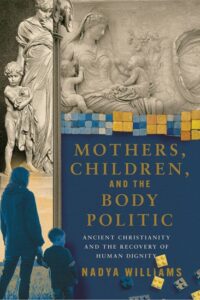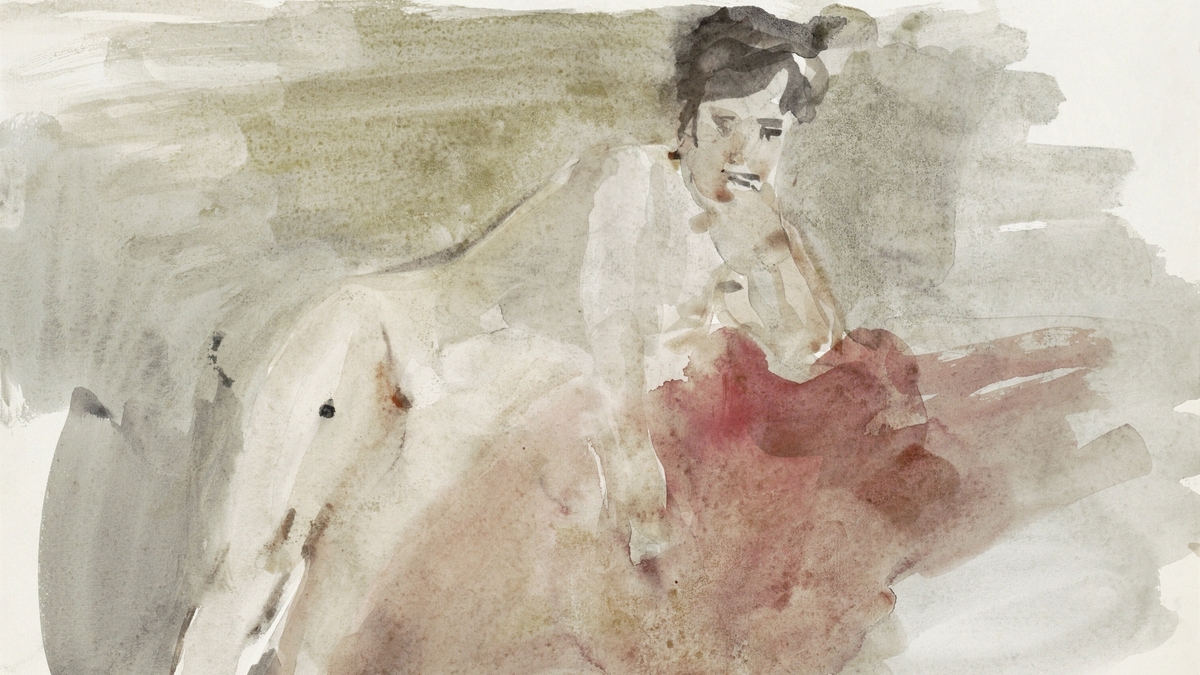For some reason, I constantly confuse Dierdre McCloskey and Rachel Levine. Probably because they’re both middle-aged white men who claim to be women, and their “woman look” is sort of similar. But they’re not the same. McCloskey is the economics professor who participated in a vicious retaliation campaign against psychology professor Michael Bailey after Bailey published The Man Who Would Be Queen (though he might be better known in gender-critical and reactionary feminist circles for condescendingly calling Kathleen Stock “dear” throughout their debate at the University of Austin). Levine is the United States Assistant Secretary for Health. I once ranted at length about someone in such a prominent position in the United States government as Levine having the ignominious background of making false accusations against an academic, merely because that academic’s research painted his identity group in an unflattering light. It wasn’t until near the end of my rant, with the eyebrows inching ever higher on my interlocutor’s face, that I realized I’d been attributing McCloskey’s sins to Levine.
Something akin to my inability to distinguish McCloskey and Levine is going on with a lot of people’s ability to distinguish biological essentialism and biological determinism (or what I will later call biological normativity). For example, in a studio recording for a televised debate about transwomen in sport a couple of years ago, someone who had served as an anti-discrimination commissioner for a state of Australia argued that we should reject the Save Women’s Sport Bill—which proposed to reintroduce biological definitions of “man” and “woman”—on the grounds that “there’s this idea, this biological determinism, determinism, that could mean that women—trans women—could be excluded from a whole range of important support services.” In the same comment she also said “one of the things about feminism is the idea that our biology doesn’t determine our destiny.”
In a 2022 paper in the academic journal Sexuality and Culture, Meredith Worthen argued against the “sex essentialist’ beliefs held by “TERFs,” including J.K. Rowling and Kathleen Stock. Worthen declared “Sometimes described as TERFs and other times self-identifying as ‘gender critical feminists,’ these groups represent ‘the sex essentialist wing of radical feminism” and “consider trans to undermine feminism’” (quoting from a paper by Lucy Nicholas). Worthen wants to know if there is a connection between “being a lesbian cis [sic] woman feminist’” and “exclusionary tactics directed towards trans women’s rights.” The presumption in the paper—unargued for—is that “sex essentialism” is bad, and that transwomen deserve “inclusion” as women and as lesbians. Worthen proclaims that, while “feminism is intended to both oppose and dismantle hierarchies, radical lesbian feminism and lesbian separatism have sometimes worked together to maintain a sex essentialist status quo with trans women excluded and stigmatized.” Presented this way, “sex essentialism” is bad because of its effects on transwomen, rather than independently. (For a thorough response to Worthen, I recommend Callie Burt’s paper “Feminist Lesbians as Anti-Trans Villains,” published in the same journal as Worthen’s last year).
All this has been going on for a while. Feminist philosopher Natalie Stoljar wrote in 1995 that “anti-essentialism is a prevailing assumption in contemporary feminism, to the extent that the term ‘essentialist’ has become a term of abuse in feminist writing as well as in university classes in feminist theory.” Indeed, Stoljar quotes Naomi Schor colourfully describing essentialism as “a prime idiom of intellectual terrorism and the privileged instrument of political orthodoxy.” Anti-essentialism wasn’t always about transwomen, though. For a while, it was about the idea that because women have very different experiences, they must not, therefore, have anything in common as women; and therefore essentialism, which posits that they do, must be incorrect.
What Is Sex Essentialism, Anyway?
First, let’s figure out what the sex in “sex essentialism” refers to, so we know what we’re accused of being essentialists about. Then we can figure out whether that’s bad.
Gender-critical feminists think that the definition of “woman” is “adult human female.” The women’s sports bill mentioned earlier proposed inserting the following definition into Australia’s Sex Discrimination Act: “woman means a member of the female sex irrespective of age.” (Some sex-realist feminists think that it might be more than that besides. See, for example Abigail Favale’s exploration of the idea that the meaning of the word “woman” might include a conception of what sex is for.) Do gender-critical feminists need to say more than the bill does? Perhaps. It’s possible that someone might wonder what “female” refers to in this definition.
There is some limited debate on this question, including over whether we should prefer an anthropocentric (human-centred) definition to an across-species definition of the sexes. Kathleen Stock considers both kinds of definition in her book Material Girls. The “chromosome account” is human-specific, and takes males to possess a Y-chromosome and females to possess only X chromosomes. (The standard configuration is XY for males and XX for females, but the chromosome account as stated can accommodate alternative intersex variations). The “gamete account” applies across much of the human, animal, and plant world. It defines males as those who have gone some way down the developmental pathway to producing small, mobile gametes (sperm), and females as those who have gone some way down the developmental pathway to producing large, immobile gametes (eggs).
In my essay collection Sex Matters, I endorsed the gamete definition in the following form: “I take… female to be the sex that, all going well, produces large immobile gametes (ova/eggs).” I explained the phrase “all going well,” as meaning “something like, bracketing certain issues like endometriosis that can create problems for typical reproductive functioning.” Referring to the developmental pathway is more precise, though, because it makes clear that this is a biological definition. It makes sense of why someone can still be female even if they do not in fact produce ova/eggs, without allowing that someone can be female because “all going well” they would have been born the opposite sex—which I take to be an incoherent claim on the grounds that had their parents had a child of a different sex, that would have been a different child. (This is an implication of the philosopher Derek Parfit’s conception of the person, presented in his 1984 book Reasons and Persons).
Is this definition essentialist? Absolutely! An essentialist definition is just a definition that offers a single necessary and sufficient condition for being some thing. Both the chromosome definition and the gamete definition do that.
An early alternative to essentialist definitions, in philosophy, was the property cluster or “family resemblance” definition. Where an essentialist definition of woman says this is what it means to be a woman, property cluster definitions say this, or this, or this, or any combination of these, are what it means to be a woman. No disjunct is necessary, so essentialism is avoided: there are many ways to be a woman. Handshakes all around.
It’s not that essentialist definitions or family resemblance definitions are better per se. Rather, it’s that either one might offer a better definition of the thing we’re interested in. A family resemblance definition is good if you’re trying to say what a game is (some games have something in common with other games, but there doesn’t seem to be one thing that all games have in common), while an essentialist definition is good if you’re trying to say what gold is.
Categories and Essential Properties
Natalie Stoljar, in the paper mentioned earlier, made the important point that we can give an essentialist definition of a category without that entailing that each member of the category has their membership as an essential property.
Set women aside for the minute, and consider the following silly example of this point. Suppose there is a simple organism that takes the form of a loop, and which can transform its shape at will. (Think of it like a glowstick with ends that can be connected and which you can bend into any shape). Suppose some of the loops transform themselves into triangles, some into stars, and some take a circular form. It may be an essential property of the category ‘triangles’ that they have three straight sides, of the category ‘stars’ that they have five outer points and straight sides of the same length, and of the category ‘circles’ that they have a single continuous curve that is at any point the same distance from the centre. But none of the hypothetical loop organisms is itself a triangle, a star, or a circle essentially (precisely because, as stipulated, they can change their shape at will).
Applying this distinction means that we could in principle give an essentialist definition of “woman” as a social category without thinking that any woman is essentially a woman. But gender-critical feminists do not offer social category or social role definitions of woman. We are not woman abolitionists. Rather, we want to eliminate the social content attached to the concept “woman,” reducing it to the bare minimum, which we think is femaleness. Because sex is an essential property of persons, being a member of the category woman will entail being essentially female, and being essentially female will entail being a member of the category woman. Because this essentialist definition is so minimal, it helps us to avoid the mistake of confusing contingent features of women with what women really are. For example, to someone who proposes that women are natural carers, the gender-critical feminist can respond that while some, even many, women might be caring, any female person is a woman whether she is caring or not. Sex-linked social constraints and limitations are easily shed by this definition.
Why might biological essentialism—“sex essentialism” about the category woman—be bad?
Natalie Stoljar said that two main arguments led to anti-essentialist conclusions: the first, taking essentialism to attribute a fixed and unchanging nature to women; the second, taking essentialism to treat all women as being the same, when they are in fact all very different.
Both of these objections to biological essentialism are easily dismissed. Because biological essentialism is purely biological, it does not necessarily attribute any nature. As women, we could all be organisms with a developmental history that took us toward ova/egg production, and yet there be nothing in particular that we are like in terms of our attitudes, behaviours, dispositions, emotions, etc. There has been a tremendous amount of research attempting to vindicate the idea that men and women have distinct natures, and so far it has failed to find any categorical differences, only average differences with lots of overlap (which may or may not be socially or culturally produced). It is unlikely that any strict relation between femaleness and a woman’s nature is forthcoming. But we can remain cheerfully agnostic about this: if some such relation is discovered, then a woman’s biology determines her nature in exactly and only that way.
Finally, it is confused to say that biological essentialism requires thinking all women are the same. Being the same in one respect is not being the same, full stop. There may be very little that everyone who has gone some way down the developmental pathway to producing ova/eggs has in common, beside that fact. That’s fine, though: there’s still a category of people who have gone some way down the developmental pathway to producing ova/eggs.
Biology and Destiny
The ex-anti-discrimination commissioner said that biology isn’t destiny. So perhaps biological essentialism is bad because it limits people’s futures.
Sometimes biology is destiny: Toril Moi gives the example “we are all inexorably subject to death because we have human bodies.” And sometimes it isn’t: thinking that a woman should be a mother takes her biological capacity to be her destiny, something that should be in her future. But biology is not normative at the level of what the organism whose biology it is should do with it. At that level, biology just is. (Suppose a bird could fly but instead always walked. It’s not failing in some special way. Even if birds typically fly, this earthbound bird is still a bird). We might call the first instance “biological determinism” and the second instance “biological normativity.”
The fact that anyone female is necessarily female (had her parents conceived a child of the opposite sex that child would not have been her; she will remain female throughout her life no matter what she does) makes biology destiny in the first way, the way that death is the destiny of all humans. Your biology determines your future, in the sense that if you are female, then your future is female. But saying that anyone female must bear a child, or must become a wife and homemaker, or must take a job as a kindergarten teacher, makes biology (femaleness) destiny in the second way, the way that a bird “should” fly.
We should reject biological normativity and accept biological determinism. Rejecting biological normativity is more than sufficient to avoid limiting people’s—here women’s—futures. When feminists argue that biology isn’t destiny, they mean that there’s nothing in particular a woman should be or do just because she is female. They don’t mean that males should be able to become female.
Exclusion and Hierarchy
Worthen objected to sex essentialism on the grounds of its being “exclusionary,” and somehow in opposition to the feminist project of opposing and dismantling hierarchies. So perhaps biological essentialism is bad because it produces the clear verdict that transwomen are not women (and trans men are women) and thus maintains a social hierarchy between trans and non-trans individuals.
But the mere fact that something is “exclusionary” doesn’t make it bad. Whether it is bad depends on who is being excluded, and from what. Excluding minorities from the legal protections afforded to the dominant group in society is bad. Excluding women from Men’s Sheds is fine.
Returning to our loop organisms, excluding those currently star-shaped from the category “triangles” is fine. Similarly, excluding males from the category “female” is fine. Females are not “the dominant group” in society relative to which trans people are a minority. Female people and trans people are distinct minority groups (“minority group” in the technical sense of social disadvantage, rather than the colloquial sense of size/number). For the same reason, the “exclusion” of transwomen as women/female is not a failure to oppose or dismantle social hierarchy, for there is no such social hierarchy.
“Biological essentialism” is often enunciated as though it were a swear word rather than an innocuous academic description of a type of definition. But the truth is, there’s absolutely nothing wrong with biological essentialism, whether in general, or in a definition of “woman.” Problems arise not with biological essentialism, but with some instances of biological determinism, and with biological normativity at the level of the organism. In the first case, the problem is with empirically false biological determinism. If biology isn’t destiny, we shouldn’t say it is, because that artificially limits people’s possibilities. But if it is destiny, on the other hand, there’s no point pretending that it isn’t. In the second case, the problem is with normativity about what an organism “should” do, given its biological capacities.
While there might be things that ovaries “should” do in order to function well as ovaries and in order to contribute to the health of the organism whose ovaries they are, there’s nothing a woman “should” do simply because she has ovaries.



